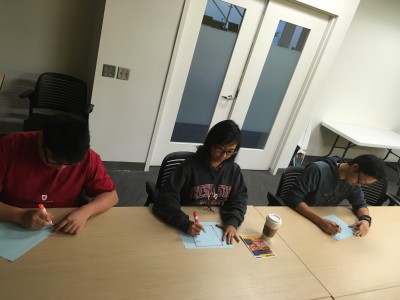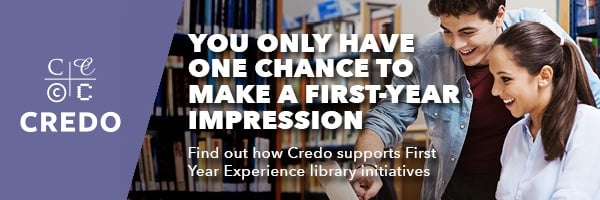 By Raymond Pun and Katelyn Angell
By Raymond Pun and Katelyn Angell
Thinking of creative ways to assess your first year students? Today, assessment is such a hot topic in academic librarianship. There’s an assessment program for user experience, instructional services, collections usage, and more. Librarians should always be thinking about new ways to assess users and information seeking needs. One way to identify future trends in services is assessing your first year students.
There are many fun ways to interact with first year students through assessment. In this piece, we will share some of our favorite “formative” and “summative” assessment activities that you can bring back to your own workshops. But first, what’s the difference between formative and summative assessment, and what are they?
They both assess your students and teaching practices differently. Formative assessment is interested in monitoring student learning and providing ongoing feedback for instructors to improve their teaching and for students to improve their learning (e.g. quizzes). Summative assessment is interested in evaluating student learning at the end of the instruction by comparing the results with a standard, rubric or benchmark (e.g. final exam).
There are a few creative ways to integrate assessment activities into your first year information literacy workshop. Here are a few examples:
- Annotated Mapping the Library - Have you ever wondered what students know about your library? Are they really studying in the library and do they know that there are many resources and services available to them? In this activity, you can have your students draw the library from their perspective and then label the services, furniture or any other detail of the library as if their drawing will serve as a map. Spend time with them to discuss their drawings and have them share it with other peers. This will have them ask questions and share their thoughts. After the discussion is over, pass the real map of the library to them so they can compare and contrast their work with an actual library map. The goal of this exercise is to have students visualize their library and identify the key services that they often remember or use. This will be helpful for discussion. Those drawing in detail will indicate that they spend a lot of time in the library while those with little detail can explain why they do not study in the library. This is a useful exercise to engage with students who are new to the library.
- Before and After with Poll Everywhere: This popular audience response system is used by educators across disciplines to engage students and evaluate learning outcomes. Teachers working in both grades K-12 and higher education can sign up for a free account that allows up to 40 simultaneous users. Educators display an open-ended or multiple choice question on the projector screen and students submit their answers via text message, Twitter, or the Poll Everywhere platform. Librarians can use the software to assess both student pre-knowledge at the beginning of an information literacy session and evaluate learning comprehension at the session’s completion (O’Connor, 2015). Poll Everywhere can also be used in a flipped classroom approach, particularly if librarians teach the same group of students more than once. For example, if a librarian teaches two information literacy sessions for the same group, they can provide students with a research-related task to complete in between sessions. The second session can begin with a similar activity presented through Poll Everywhere, and students can be given class time to solve the problem and share their results.
- Pre-Test, Game, Post-Test: A very common method of assessing student learning is by administering pre- and post-tests. This approach can easily be applied in a context that’s fun and educational: incorporating games into the library classroom! Librarians have created freely available digital games that teach students key information literacy competencies, including Citation Tic-Tac-Toe (citing) and Magnetic Keyword (keyword development). Students complete a pre-test related to a specific competency, e.g. citing skills, play an educational game, and complete a post-test. Analysis of the pre and post-tests reveal differences in student comprehension.
Different disciplines have their own learning outcomes, rubrics or standards. Consider integrating those elements into your own assessment practices in information literacy. These activities can be more perceived as interactive tools than traditional assessment programs, however, they can still reveal a lot about the first year experience and their learning trends.
Don’t forget to stop by Credo Booth #925 during the ACRL Conference to hear more about assessment tips and LJ survey results!
Katelyn Angell is First Year Success Librarian/Assistant Professor at Long Island University, Brooklyn Campus. She has published several articles on assessment of information literacy skills, including “Far From a Trivial Pursuit: Assessing the Effectiveness of Games in Information Literacy” in EBLIP with Eamon Tewell.
References
O'Connor, K. (2015). Interactive Library Instruction: The Use of Poll Everywhere as an Assessment Tool. Endnotes, 6(1), 1-13.

